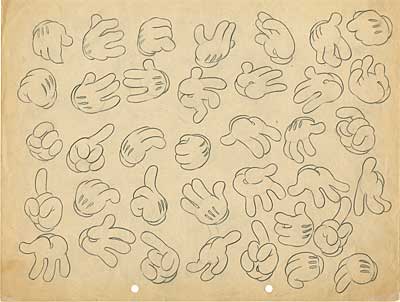
Mickey Mouse Hand Model Sheet by Les Clark ca. 1932
Grim Natwick was a remarkable artist. His career as an animator spanned the entire history of animation, from silent Mutt & Jeff cartoons all the way through Richard Williams’ The Thief and the Cobbler. I don’t know of anyone more qualified to answer the age-old question…
Who invented the three fingered hand?
Grim studied art in Vienna soon after the end of World War I. Included with this article are scans of Grim’s anatomy studies from a little after his studies there. Some of you may see a similarity with Bridgeman’s wonderful books on constructive anatomy . Grim was in New York when Bridgeman was teaching there, so it’s entirely possible that these drawings were done studying under Bridgeman himself.
. Grim was in New York when Bridgeman was teaching there, so it’s entirely possible that these drawings were done studying under Bridgeman himself.
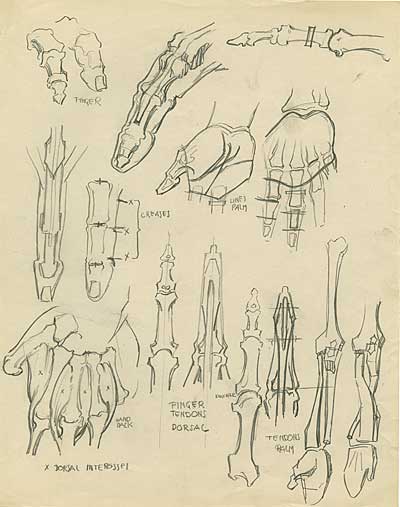 DESIGN FOR ANIMATION
DESIGN FOR ANIMATION
By Grim Natwick
Who invented the three-fingered hand? Someone way back in the dark ages of animation got tired of drawing hands with four fingers and simply left one off, and cartoon hands have been much easier to animate ever since. It was a stroke of genius. The four fingered hand disappeared from animation until "Snow White" (1937). Somehow a pretty girl didn’t look right with only three fingers. But the Seven Dwarfs still had three fingered hands.
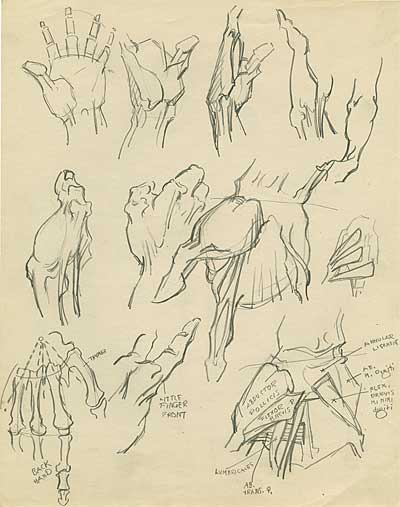
Characters and drawing styles changed as animation became a popular form of entertainment. Straight lines were changed to curved lines- square shapes became round shapes. Curved figures moved better on the screen and eliminated what we used to call "strobe".
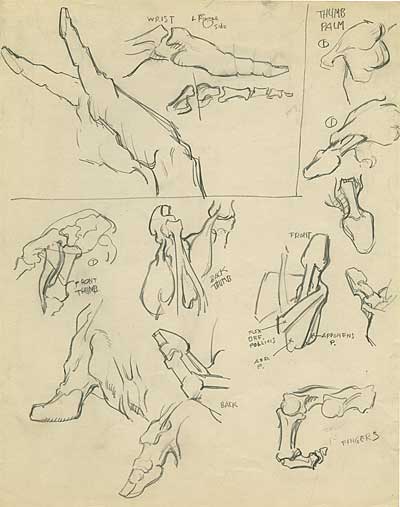
Mickey Mouse was a good example of a character designed to eliminate the early problems of animation. His head was a ball with a rounded lump for a nose, a few circles for eyes, and two frisbees for ears. His body was shaped like a pear or gourd. Four pieces of garden hose were used for arms and legs. His hands were just two bunches of peeled bananas. Four old-fashioned donuts served as cuffs and anklets. He had a hair snake for a tail, and his shoes were two boxing gloves with the thumbs cut off. He animated perfectly. Mickey has changed through the years, but the formula is still the same.
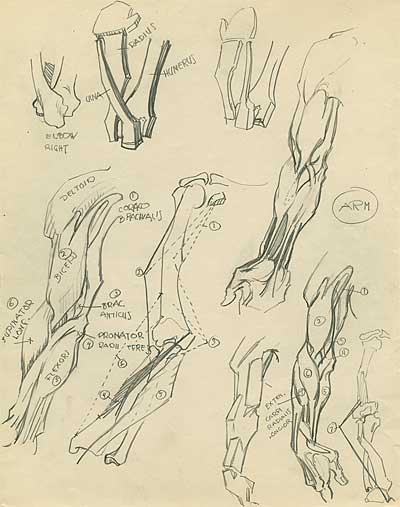
By 1930, special artists were assigned the job of designing characters for animation. Cartoon stories had become more sophisticated and so had the viewing audience. The characters became individuals- stars- a part of Hollywood. A whole galaxy of heros and heroines have become famous in distant corners of the globe. At a recent animation festival in Zagreb, Yugoslavia, several Chinese animators appeared wearing Betty Boop buttons. Mickey Mouse, Donald Duck, Bugs Bunny, Woody Woodpecker and the Flintstones are as well known in Paris, London and even Gnosjo, Sweden, as they are in Oshkosh, Wisconsin. They have become world classics, and good design and good drawing have made them so.
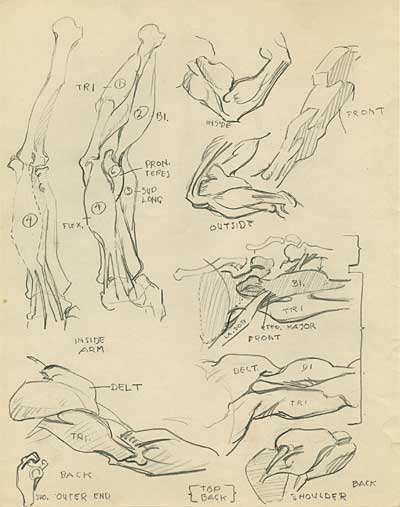
The great animators were almost always good draughtsmen. Milt Kahl, Marc Davis, Frank Thomas, Ollie Johnston, John Lounsbery, Ward Kimball– These men drew exceptionally well. Among the animators who preceded them, those who could stay in the saddle when the wind was blowing were talents like Dick Huemer, Bill Tytla and the enigmatic Art Babbitt. Babbitt always said that he hated to draw, yet he animated the "most beautiful of all Queens" in Disney’s "Snow White". He drew the complicated Mushroom Dance in Fantasia, an animation masterpiece that required the mind of a ballet dancer and the patience of a Saint, which Babbitt is not. One could name a host of beautifully drawn characters that Art Babbitt "hated to draw".
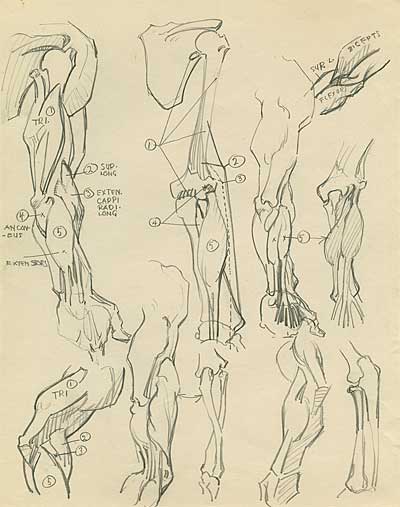
How vital a part does drawing play in animation? Is it more important than a dramatic sense, a delicate feeling for humor, spacing and timing?
While an animator may borrow craftsmanship from an actor, he is faced every day with playing a new role, acting out a new scene, breathing life into a new character. His tools are ordinary sheets of paper, and an ordinary lead pencil. If his drawings lack magic, a scene will be a failure.
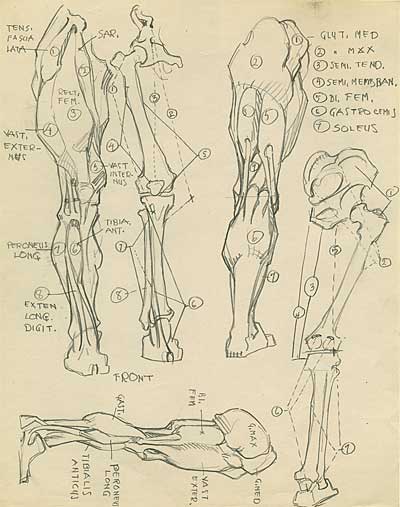
Can one compare animation with the more dignified art of easel painting? Is a Ward Kimball any less talented than Seurat? Or is Bill Tytla less gifted than Raol Dufy? If we transpose the question to a more familiar area of the culinary arts- the Art of Cookery- one could say that one chef prepares a meal of barbecued spare ribs with Spanish sauce and chilled beer; while the other serves wild pheasant under glass with Rhone River wine and truffles. Either meal could taste best at a chosen time and a chosen place.
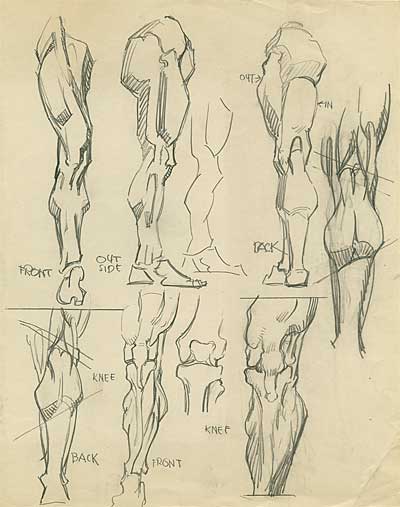
If Claude Monet had tried to draw a Mickey Mouse, the result would probably have been a real gnocchi- a dodo! On the other hand, if you had asked a Les Clark or a Freddie Moore to paint purple haystacks or pointillistic water-lillies, the result might have been equally disappointing. They are two different art forms.
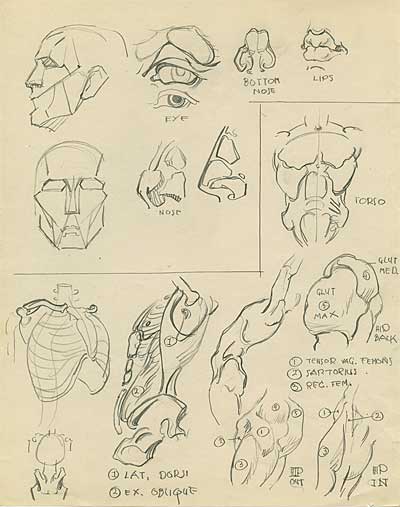
Stephen Worth
Director
Animation Resources
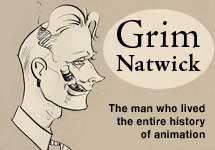

This posting is part of an online exhibit entitled Grim Natwick’s Scrapbook.


This posting is part of the online Encyclopedia of Cartooning under the subject heading, Animation.









 by
by 
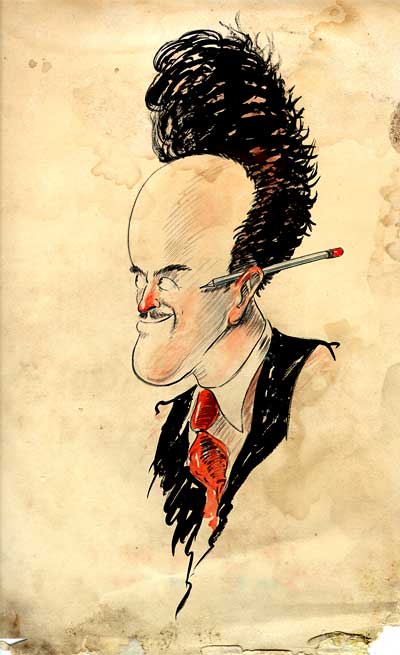
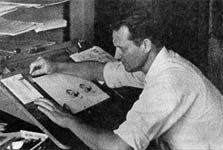
![]() Grim started in the 20’s animating silent Krazy Kat cartoons at the Hearst Studio in New York. He ended up at Fleischer, where he created Betty Boop. He received an offer to move West to join Walt Disney, but friends advised him that Ub Iwerks, who had just left Disney to form his own studio, was the real creative spark behind the Mickey Mouse pictures. So Grim joined Ub instead, and ended up running the studio. A few years later, Grim became excited with the prospect of a feature length cartoon, so he went to Disney, where he ended up animating the title character. He returned to the Fleischers in Florida for a spell, and ended up back in Hollywood working for Walter Lantz on the wartime Woody Woodpecker cartoons. At an age when most of his contemporaries were retiring, Grim jumped into the modern stylization of UPA with both feet, and was instrumental in setting up their New York offices. He worked with Culhane, Ward and Melendez; and in his 80s, animated on Richard Williams’ Theif and the Cobbler. Here is a life that spanned the entire history of animation.
Grim started in the 20’s animating silent Krazy Kat cartoons at the Hearst Studio in New York. He ended up at Fleischer, where he created Betty Boop. He received an offer to move West to join Walt Disney, but friends advised him that Ub Iwerks, who had just left Disney to form his own studio, was the real creative spark behind the Mickey Mouse pictures. So Grim joined Ub instead, and ended up running the studio. A few years later, Grim became excited with the prospect of a feature length cartoon, so he went to Disney, where he ended up animating the title character. He returned to the Fleischers in Florida for a spell, and ended up back in Hollywood working for Walter Lantz on the wartime Woody Woodpecker cartoons. At an age when most of his contemporaries were retiring, Grim jumped into the modern stylization of UPA with both feet, and was instrumental in setting up their New York offices. He worked with Culhane, Ward and Melendez; and in his 80s, animated on Richard Williams’ Theif and the Cobbler. Here is a life that spanned the entire history of animation.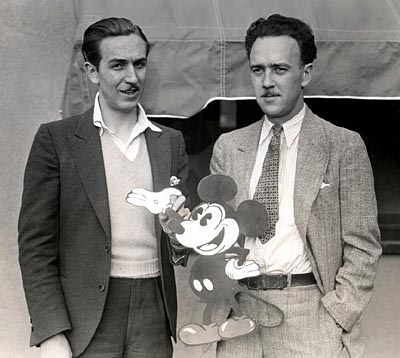

![]()








































